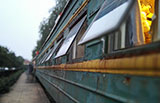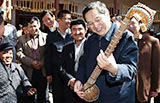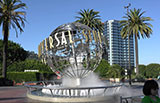Qingdao
(chinadaily.com.cn) Updated: 2015-09-12 14:12China’s most vigorous economic city, China’s best business cities, the most satisfactory city among entrepreneurs, the city most worthy of investment in the eye of multinational companies and the city of best investment environment selected by the World Banks.
It is zero meter above sea level, that is, the leveling origin in China.
Qingdao is a seaside city of hills, with the East lying lower and the West lying higher, the North and South rising gradually. The southeast Laoshan Mountain stretches northwards to the urban area. There are underwater banks, modern subwater deltas and sea eroded plains lying at the bottom of the shallow sea. It has winding coastline, shaped by alternately arranged bays and capes. The total length of the coastline (including its shoreline) is 862.64 kilometers, among which the mainland coastline is 730.64 kilometers, accounting for the 1/4 coastline of Shandong Province. It owns 32 gulfs covering an area of over 0.5 square kilometers, the existing 69 islands and 10 islands with permanent residents.
Situated in north temperate monsoon region, Qingdao has a climate influenced by temperate monsoon. With the direct regulation of the marine environment and the impact of southeast monsoon, currents and water masses, it features a prominent maritime climate: humid air, mild temperature, summer free of scorching heat with an average temperature of 23℃, winter free of freezing cold with an average temperatures above 0℃, as well as the average annual rainfall of 662 millimeters.
A waterfall in Laoshan Mountain
With a long history and splendid culture, Qingdao is the birthplace of Chinese Taoism. As early as the Neolithic age five or six thousand years ago, it is one of the main areas where the Dongyi people lived and multiplied, who leave behind a rich and colorful culture of Dawenkou, Longshan and Yueshi.
During Shang and Zhou dynasty, Qingdao was the cradle of marine salt, among China’s “top four ancient salt areas” and “top five ancient ports”. During the Spring and Autumn and the Warring States Periods, Jimo, the second largest town of Shandong province was established.
“The ancient city of Jimo” (in modern Pingdu city) has become the oldest relics of Chinese ancient city in existence. Goujian, king of the Yue State, held a meeting with warlords and became the overlord of his time at Mount Langya (in modern Jiaonan-shi). Later when Qin Shihuang, the first emperor unified China, he made 5 nation-wide supervisions and mounted the Mount Langya for 3 times. Langya was also said to be the starting point of China’s first recorded ocean voyage, in which Mr. Xu Fu sailed eastwards to Korea and Japan. The Emperor Wu of the Han dynasty, in his early age, used to be the king of East Jiaozhou and had Buqi (in modern Chengyang-qu) as his capital. Emperor Wu was also the king who had the most frequent visits to Qingdao region. In Tang and Song dynasties, as a hub linking northern and southern water transportation, Qingdao became the most important transportation junction and commercial port of northern china. Particularly in Song dynasty, a Trade and Shipping Ministry was established to supervise foreign trade in Banqiao town (in modern Jiaozhou-shi). In Yuan dynasty China’s only ocean-linked Canal, the Jiaolai Canal, was built here and flew across the Shandong Peninsula. In Ming and Qing dynasties Qingdao, named as Jiao’ao, functioned as a key fort of coastal defense in northern China.
On June 14th, 1891, the Qing government set up defenses in Jiao’ao and Qingdao was established ever since. On November 14th, 1897, Germany occupied and colonized Qingdao, which gave rise to Wu Hsu Reform, initiated by a fraction of reformers in Qing Government in 1898. When the First World War broke out in 1914, Japan evicted Germany and took over the city. In 1919 the national quest of retaking Qingdao’s sovereignty triggered the May 4th Movement, which divided China’s modern history with its contemporary one. On December 10th, 1922, the Northern Warlord Government withdrew Qingdao’s sovereignty and established it as a commercial port. In July, 1929, the Kuomintang government set up the Qingdao chartered city and renamed it as the City of Qingdao in 1930. On January, 1938, Japan invaded the city again. On September, 1945, the Kuomintang Government took over Qingdao remaining as a chartered city.
- Another corruption suspect repatriated from US to China
- Cross-border triad operation snares 19,000 crime suspects
- Leaders target ongoing bureaucratic inaction
- Beijing to add bicycles, crack down on illegal parking
- Wastewater cleaning finished at Tianjin blast site
- 877 investigated for corruption in financial sector
- Xinjiang gets a helping hand to improve locals' livelihoods
- Li: Blasts must bring harsh penalty
- Students' satellite launched into space
- Holidays spark shopping spree







